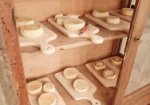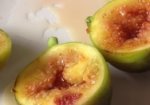If you joined us at Autumn Harvest you may have been part of Kristen Allan’s cheese-making workshop. Everyone was after her ricotta recipe, and she’s been kind enough to share it with us!
We’ve featured Kristen’s cheese-making and ricotta before, but its well worth a repeat.
Ricotta is incredibly easy to make, and can be eaten fresh, combined into pastas, cakes and and any number of recipes. A favourite for me is simply to serve it soft and slightly warm, drizzled with a really good honey and crispbread – and maybe a braised fig or two! While the later processes vary incredibly in complexity, cheese starts in a very basic whey (yes, a cheese joke!): separating the soft ‘curds’ from the watery ‘whey’. In this case, the method uses lemon juice. Mrs Beeton gives this prosaic explanation of the concept, with a note for a rather horrifying ingredient for colouring –
CHEESE.
Cheese is the curd formed from milk by artificial coagulation, pressed and dried for use. Curd, called also casein and caseous matter, or the basis of cheese, exists in the milk, and not in the cream, and requires only to be separated by coagulation: the coagulation, however, supposes some alteration of the curd. By means of the substance employed to coagulate it, it is rendered insoluble in water. When the curd is freed from the whey, kneaded and pressed to expel it entirely, it becomes cheese; this assumes a degree of transparency, and possesses many of the properties of coagulated albumen. If it be well dried, it does not change by exposure to the air; but if it contain moisture, it soon putrefies; it therefore requires some salt to preserve it, and this acts likewise as a kind of seasoning. All our cheese is coloured more or less, except that made from skim milk. The colouring substances employed are arnatto, turmeric, or marigold, all perfectly harmless unless they are adulterated; and it is said that arnatto sometimes contains red lead.
Mrs. Beeton’s Dictionary of Every-day Cookery. London, 1865 edition.
Get started
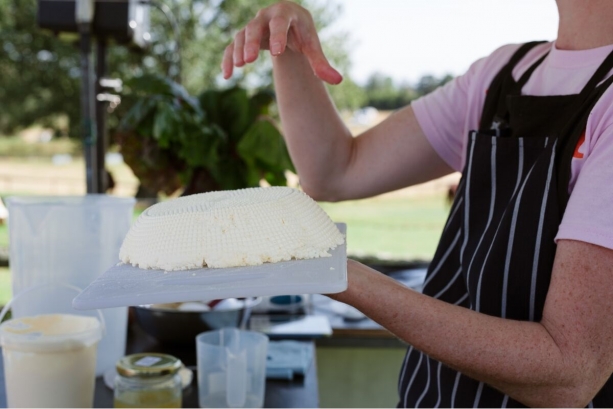
Fresh ricotta. Photo © Luisa Brimble for Sydney Living Museums.
While making ricotta is incredibly easy, Kristen has more tips as you become more experienced. If for example as the mix is almost at its peak temperature and you think the curds really aren’t separating, add a small splash of lemon juice, about a tablespoon.
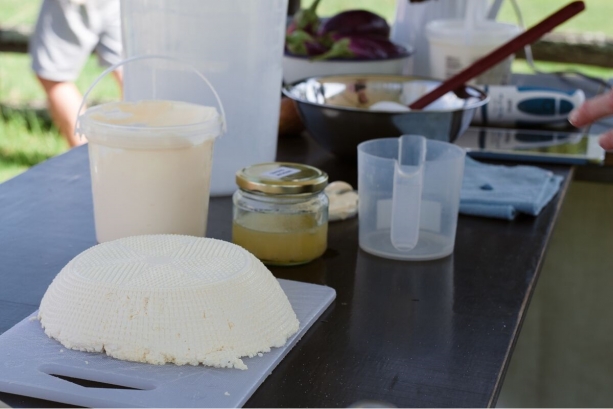
Freshly turned out ricotta. Photo © Luisa Brimble for Sydney Living Museums.
While a muslin-lined colander is easy, a special ‘ricotta basket’ does the job perfectly. If you’ve bought a full round of ricotta you’ll notice they come in a plastic basket. When turned out, this gives the ricotta top a distinctive textured pattern.
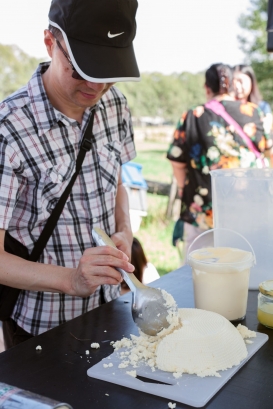
Tucking in. Photo © Luisa Brimble for Sydney Living Museums.
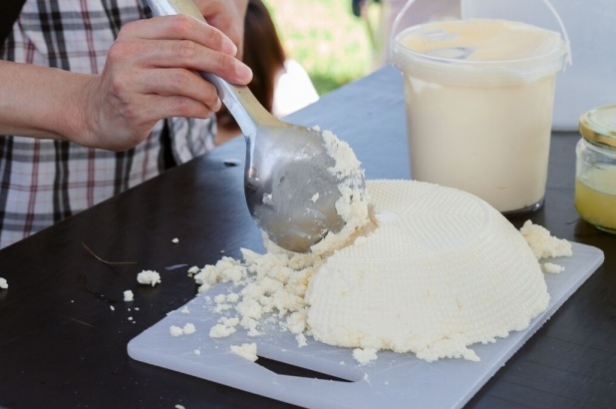
Tucking into freshly made ricotta by Kristen Allan. Photo © Luisa Brimble for Sydney Living Museums.
Kristen’s homestyle ricotta
Ingredients
- 2l full cream milk
- 100ml pouring cream
- 50ml lemon juice
- 1 teaspoon fine sea salt
Note
This is a method Kristen Allan recommends as a perfect foray into domestic cheesemaking. Ricotta is the easiest of cheeses to make in the home as it requires no specialised ingredients or equipment beyond a food-safe heat thermometer.
Directions
| Put enough cold water into a 5-litre pot to cover its base, about 1-cm deep. This will help prevent the milk from sticking or burning. Pour all the ingredients into the pot and stir. | |
| On a low heat, gradually bring the milk to the about 95°C. This should take about 1 hour. Try not to stir the mixture too much, but make sure it is not sticking to the bottom of the pot. At around 90°C, you should notice the milk starting to separate into curds and whey. If not, you will need to add an extra dash of lemon juice. Turn off the heat once the ricotta reaches 95°C and leave to settle for 10 minutes. | |
| Line a colander with muslin and place a bowl underneath to catch the whey. With a sieve or slotted spoon, gently scoop the curds into a colander. | |
| Drain for approximately 10 minutes or longer if you want a firmer ricotta for baking or drying. | |
| Transfer to a storage container or eat while still warm. | |
| Refrigerate and use within 7 days. | |
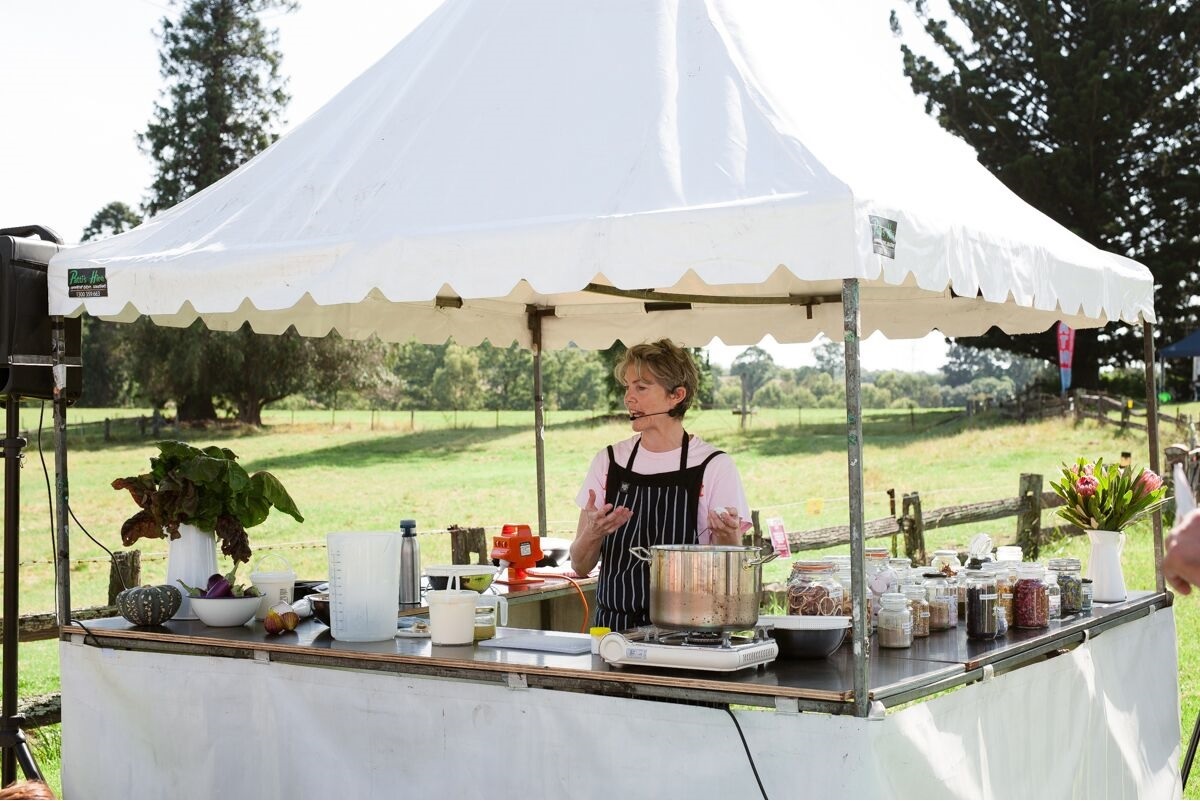
 Print recipe
Print recipe
